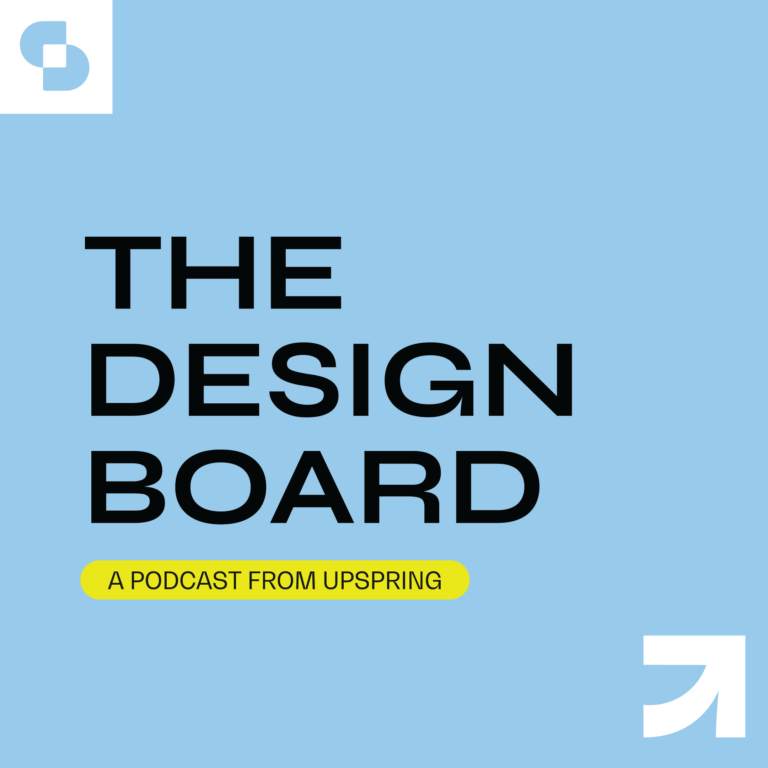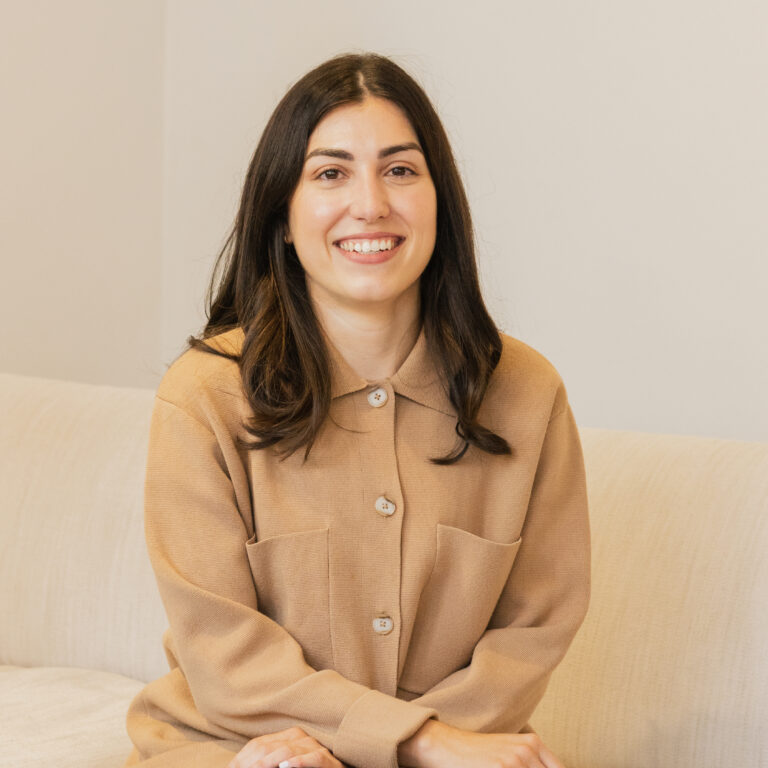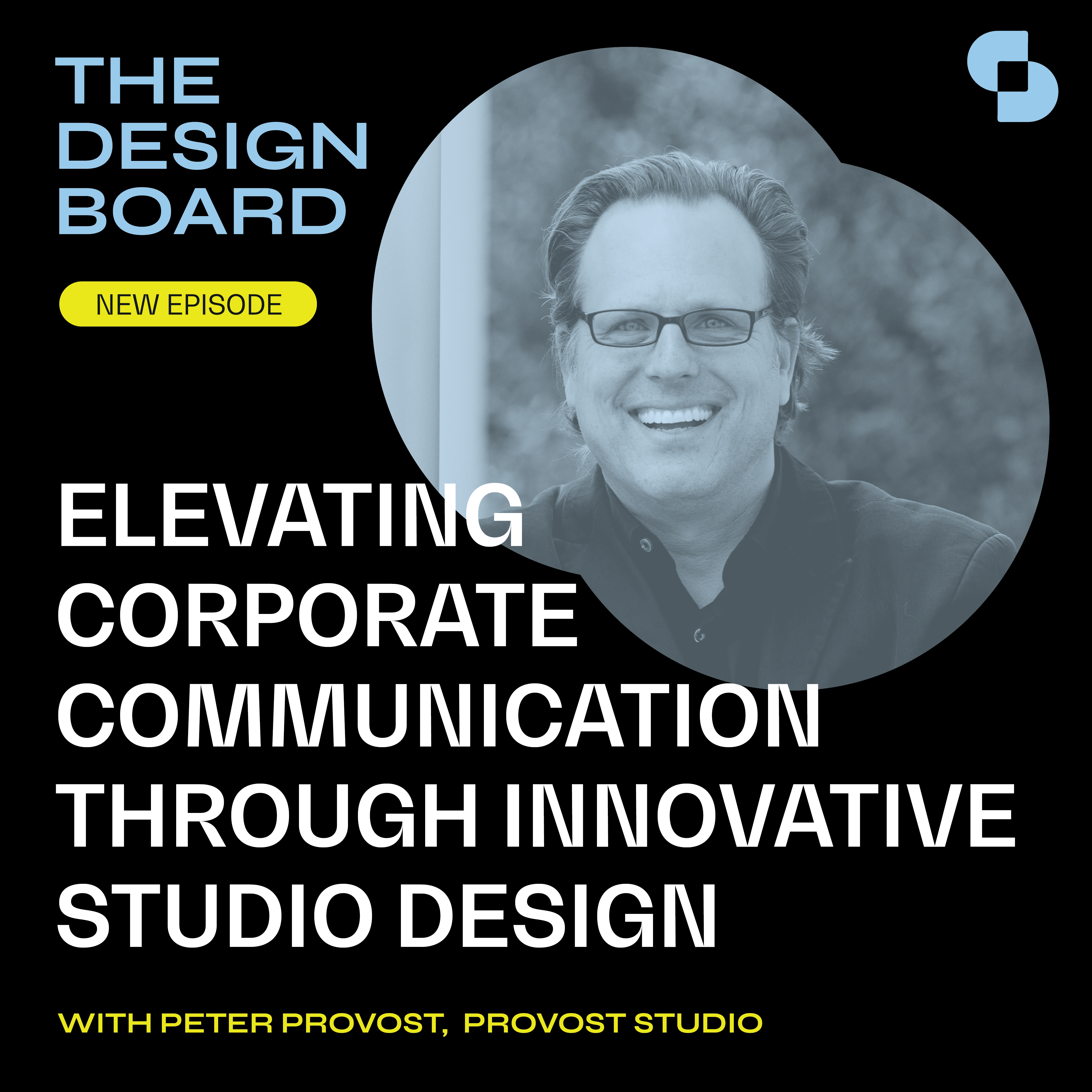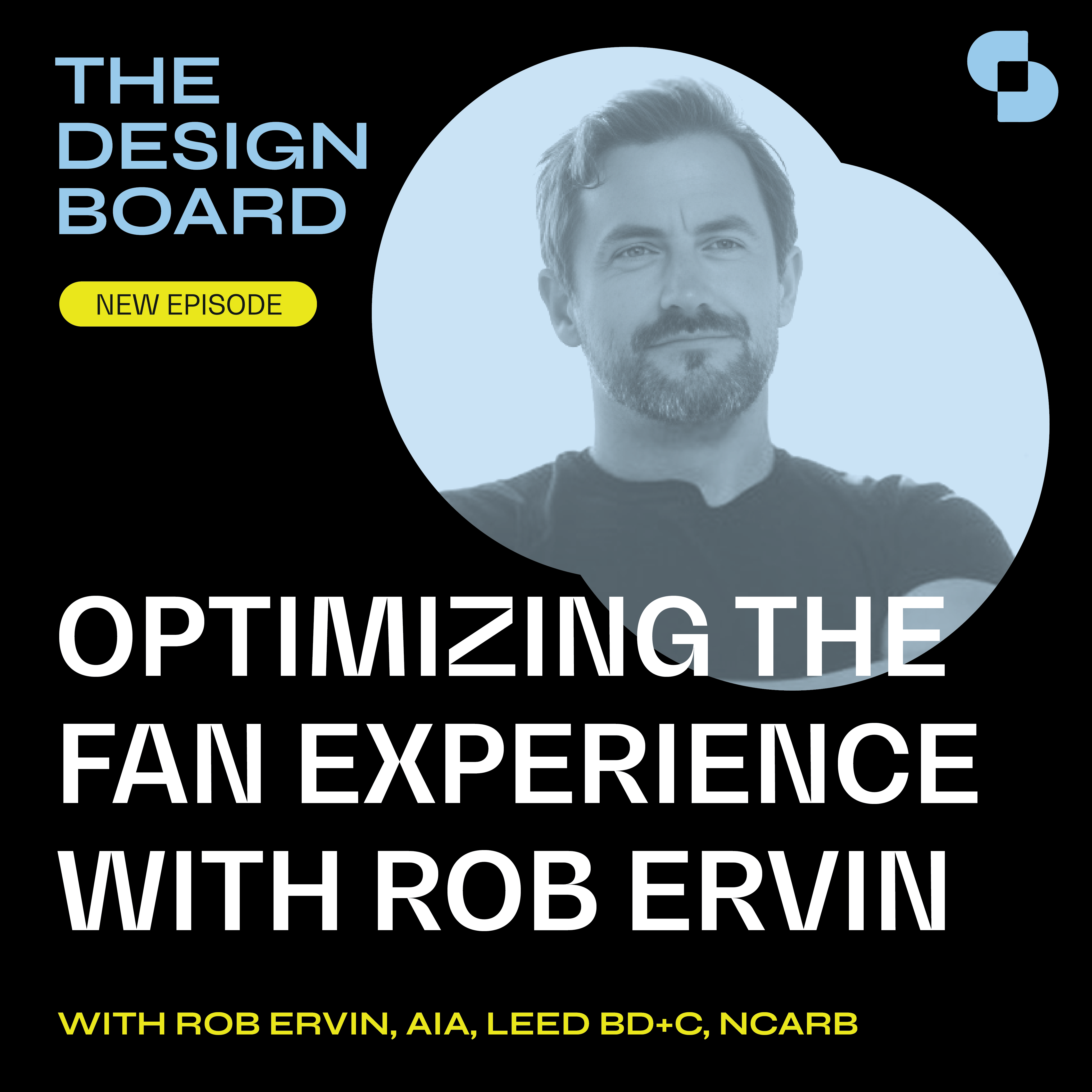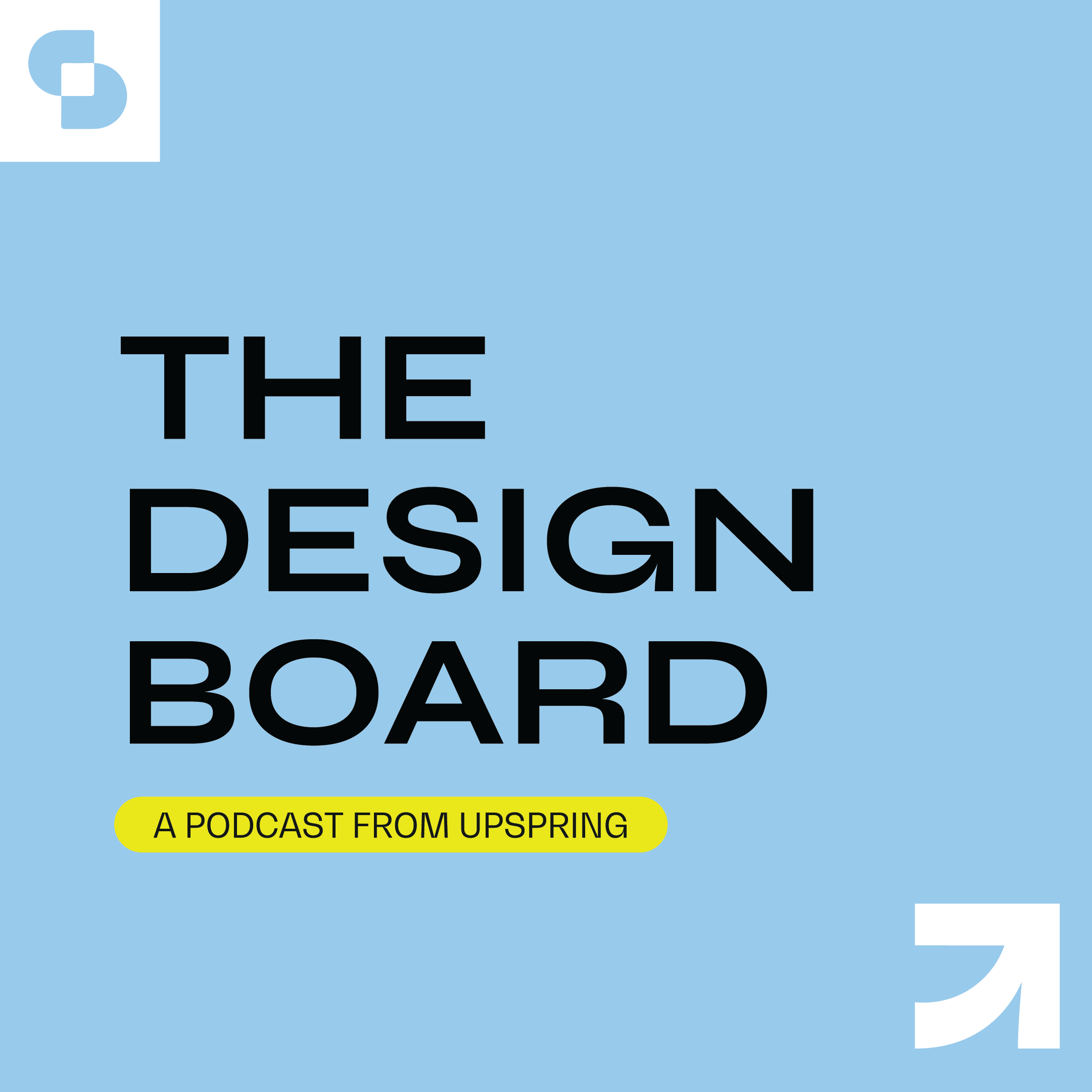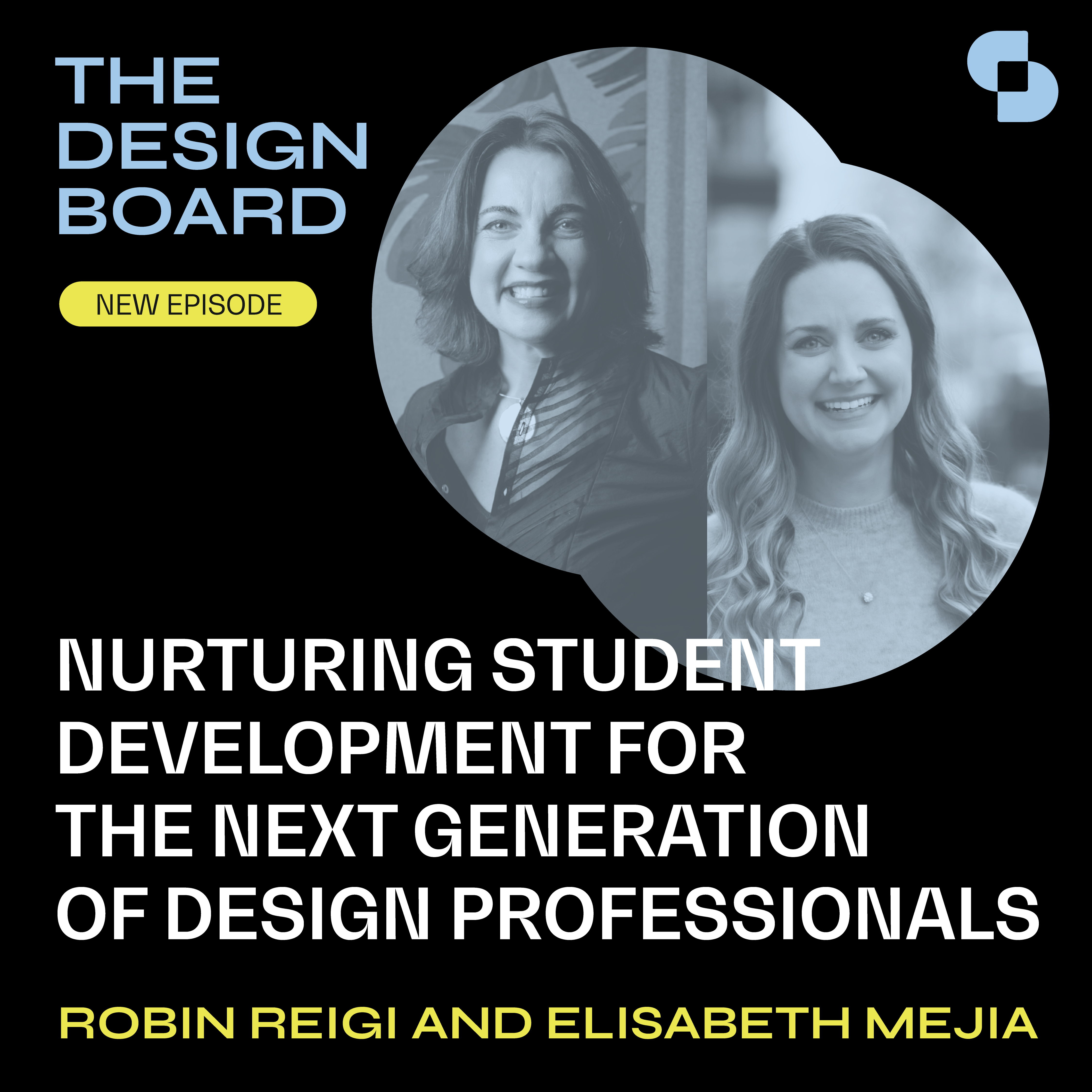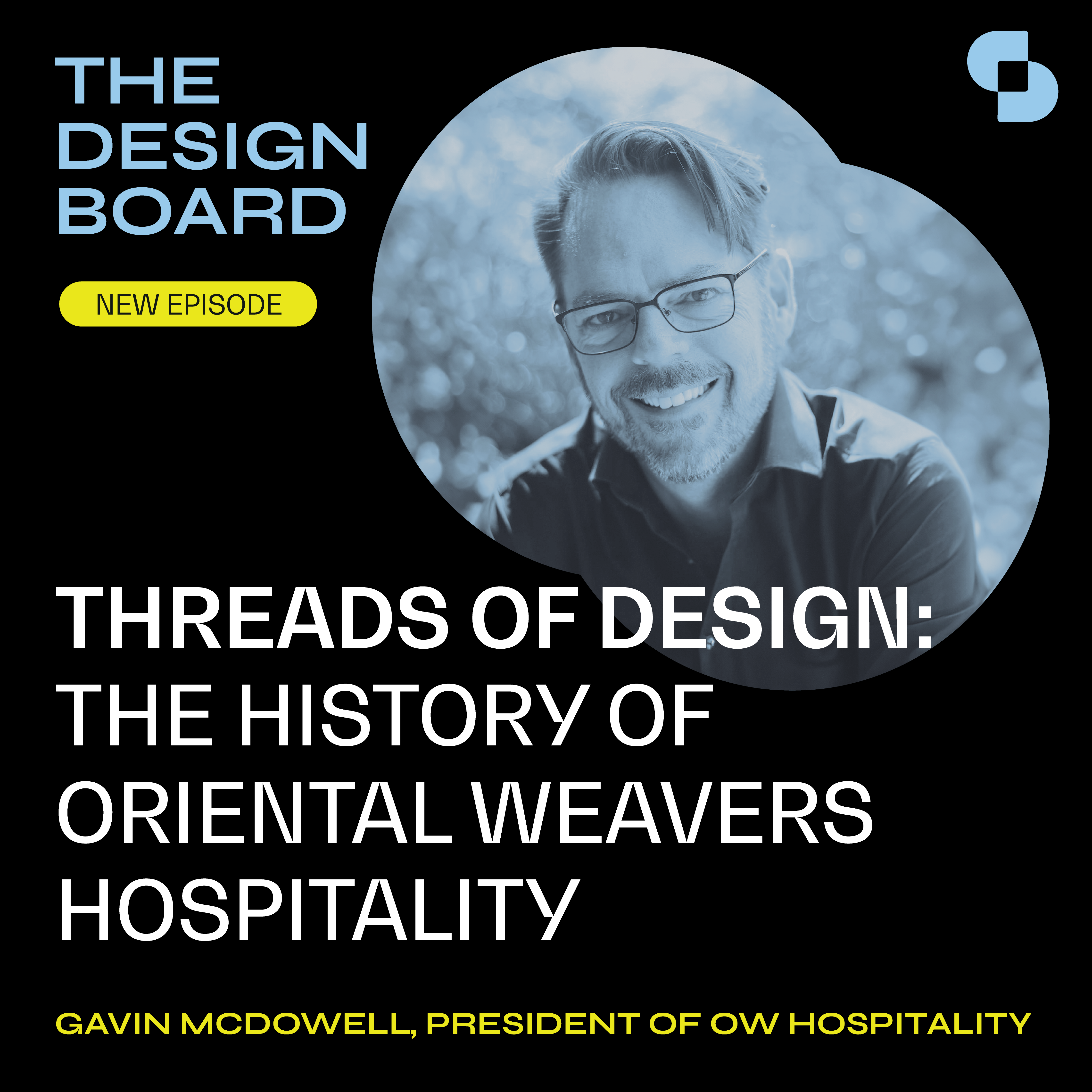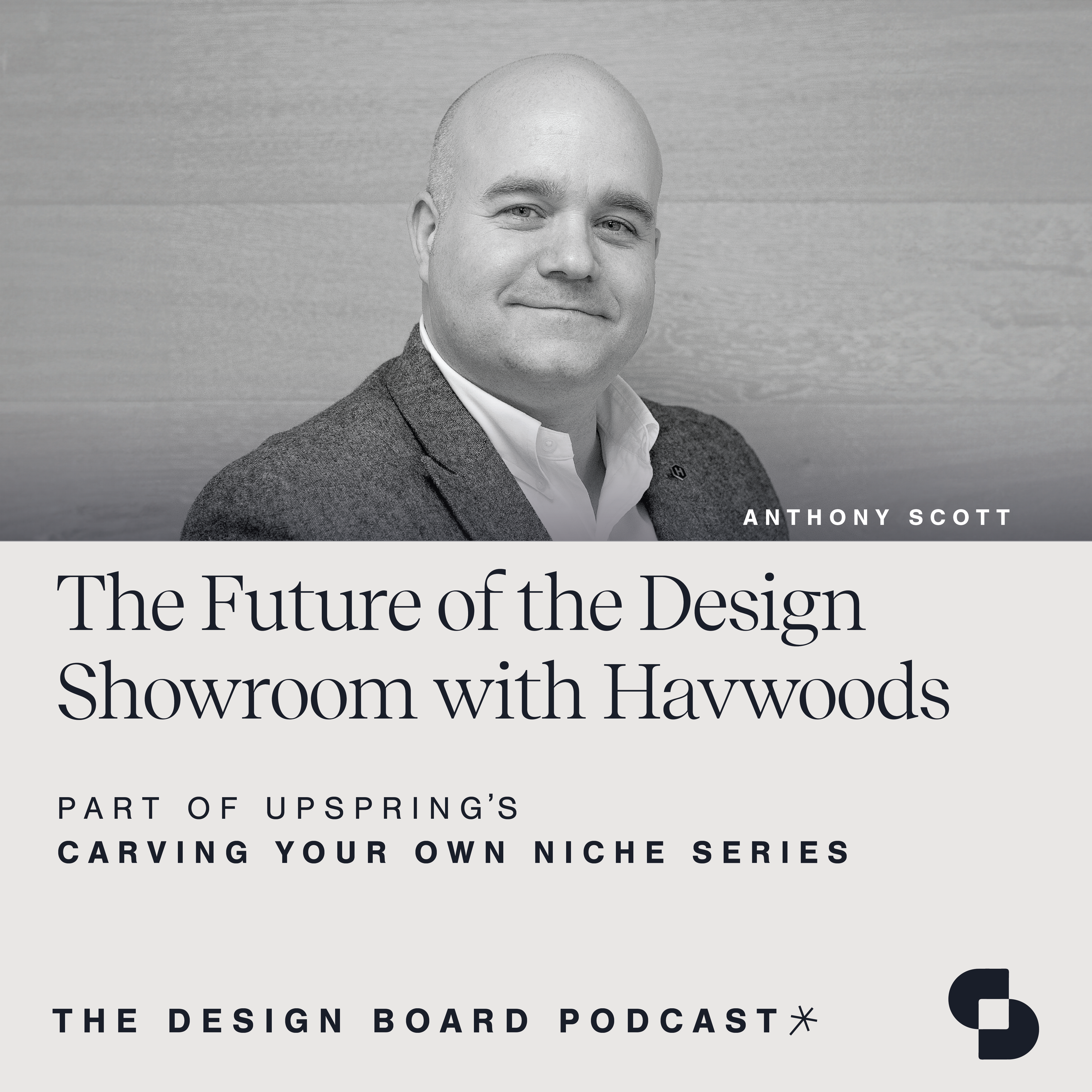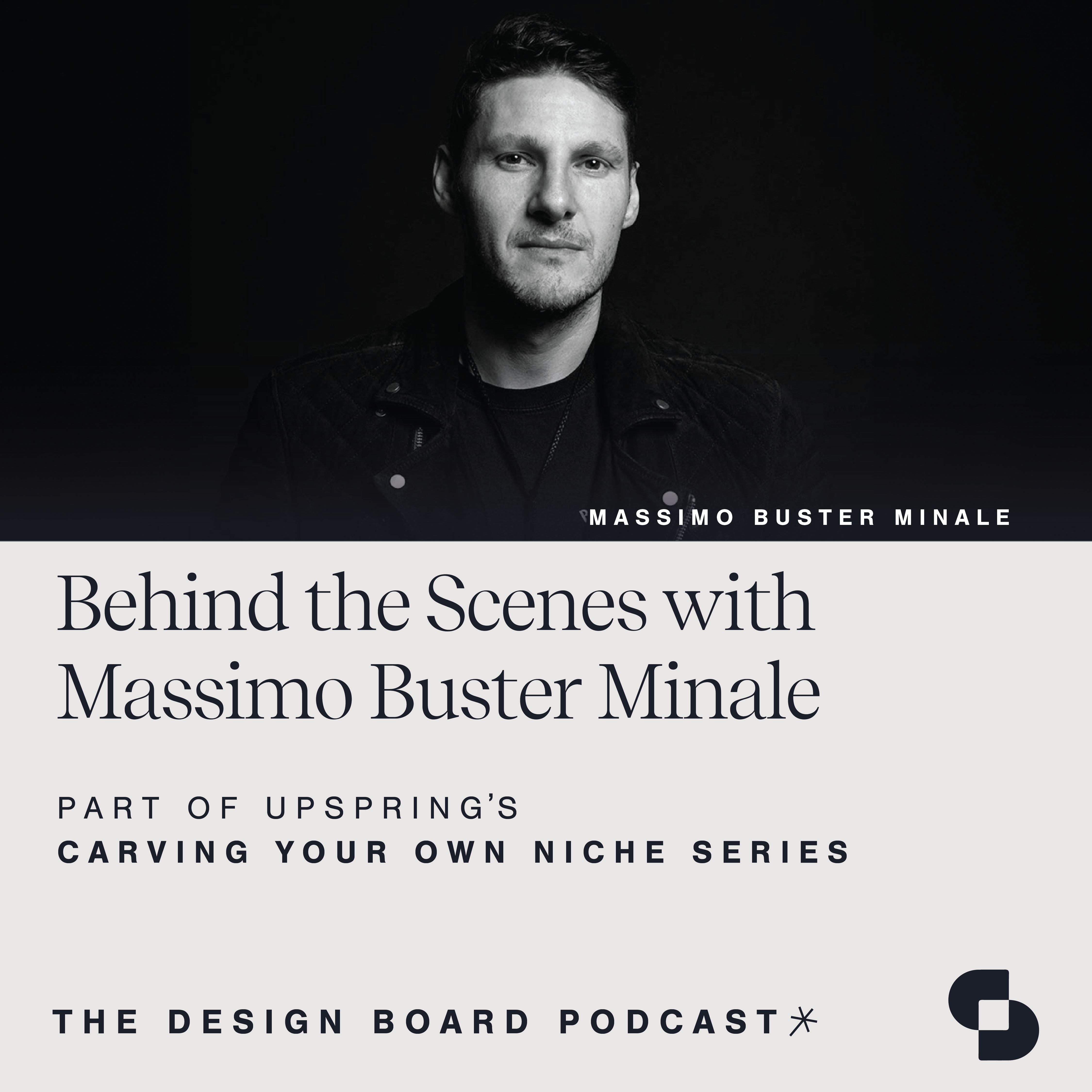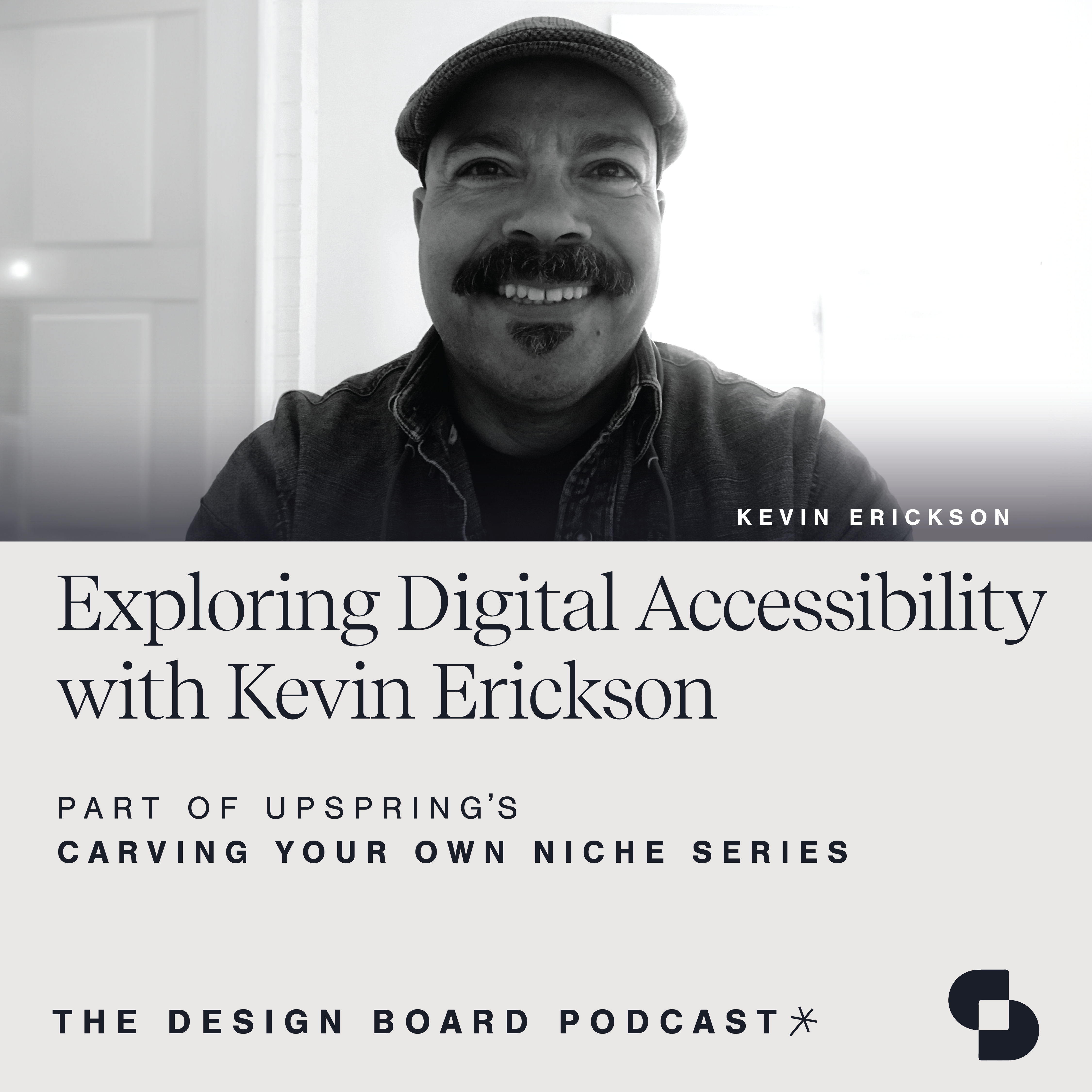In this episode, we sit down with the team at ZWA to recap their 25-year journey. Learn how the firm’s core principles have evolved, discover its approach to organic development for resilience and growth, and explore the role of adaptability in sustaining success. We chat about expansion strategies, the alignment of team aspirations with the firm’s personality, and the entrepreneurial spirit that fuels continuous learning.
The Design Board, by UpSpring, is a proud member of SANDOW Design Group’s SURROUND Podcast Network, home to the architecture and design industry’s premier shows.
This transcript was exported on Feb 23, 2024 – view latest version here. Tiffany Rafii: Welcome to The Design Board, a podcast created by the team at UpSpring that focuses on design, development, and everything in between. We invite innovators in our industry and explore topics that support your growth in every way. The Design Board is a proud member of SURROUND, a podcast network from SANDOW DESIGN GROUP, featuring the architecture and design industry’s premier shows. Check it out at surroundpodcast.com. Welcome everyone to The Design Board, a podcast by UpSpring that focuses on design, development, and everything in between. I’m your host, Tiffany Rafii, and today we have an insightful session with the minds behind ZWA, which is celebrating its 25th anniversary. Today we are joined by Doug Zimmerman, Lee Weintrau, principals at the firm, as well as director of architecture Jasenko Badic, who will share their perspective on the evolution of ZWA over the past two and a half decades. All right. Well, I am so excited to be here with you all today. Let’s hop right in and start chatting through. So, ZWA has been a dynamic force over the past 25 years. How would you describe the evolution of the firm since its opening in 1998? Lee Weintrau: In 1998, we started off as what we called the design informed owner’s representative business. And what that really means is providing leadership, the leadership required to ensure that our client’s dreams were realized functionally, aesthetically, and cost-effectively. Clients recognized both our passion and our creativity in that role, and one of our clients, Marriott, suggested after doing a number of projects where we were the owner’s representative, that the projects might actually benefit from one entity doing both the owner’s representative work or project management, which we call it, and the design work, and they expressed their priorities. They wanted to save time and money. They wanted to increase efficiency and quality, and they wanted to decrease finger pointing. So, we identified that that was a space we could evolve into and as such, and we have the right side of our brain and the left side of our brain firing up simultaneously. So, we combined our creative design abilities and our leadership abilities to help develop solutions for our clients that met their needs, and it was a win-win going forward from that point. Tiffany Rafii: Eliminating finger pointing is an important one, so I love that. So, I’d love to dive in and learn a little bit more about the core principles of the firm. How have those evolved over the last 25 years, and in what way do they continue to guide and shape the decisions and the actions of the team? Doug, do you want to get us started on that one? Doug Zimmerman: I’d be delighted. Well, when Lee and I founded the firm in 1998, we were both transitioning from a very large 600-person AE firm. And when we started talking about starting our own firm, we tried to really spend time analyzing why we would want to do that, and we really shared a couple things that I think have helped to drive the firm over the many years we’ve been in business together now. One of them was that we were really passionate about design and problem-solving, and on many different levels, from very large projects to small projects. And that we also were really curious about how to take the knowledge that we had and to be really hands-on in the process of working with our clients to really figure out better ways of applying design to their business needs. And that was really what convinced us that leaving a big firm and starting our own little house would be both interesting, but it would also allow each of us to self-actualize and really play off of one another’s strengths. Part of that journey was to really cultivate a set of core values that represented who we were, but that really evolved over each generation of our firm to better design our decision-making, and quite frankly, it still guides our principles and our actions today with our current team. The core values evolved, and actually there are five of them, and we use this as a filter today for most everything we do. They include being self-initiating problem solvers. Everyone in our organization is pretty passionate about what they do and how they solve problems. We have always been real cheerleaders and enthusiasts for our client’s success, and in some cases we have really developed, over the years, client relationships that have gone well beyond the professional norm and have become personal friends with the people we’ve worked for. We’re really passionate about learning. And I think the older we are, the more we understand the importance of learning and of always trying to understand what’s influencing the decisions in the world today, and it’s a common denominator in the people that have joined us. We’ve also really been great team players, collaborators, and really open to the influence of the process. Lee and I in many regards share these core values, but we’re also very different and we often look at the world issues through a different set of lenses, and it’s always made for a very interesting dynamic. We haven’t always been successful with it. We’ve had people that have come and gone, sometimes on their own initiative and sometimes with our help. But the real result of that, which we really feel strongly about today with probably the best work culture we’ve ever had, is that it’s created a filter for our recruiting, and our team members really do believe and live these values. It’s allowed us to create an environment of trust. And as a result of that, it’s allowed people to be pretty open and honest both about their problem solving, but even to really work outside of their comfort zones. And in many cases, this is where the real a-ha moments come when we’re working with clients to solve complex problems. It also has really contributed to our survival through the tough times and really helped us grow through the good years. These underlying values and processes are what we’re now passing along to Jasenko and the other members of our leadership team who are going to be the future leaders in the next round of ZWA. Tiffany Rafii: No, I love that. The culture and the core values that you shared, it couldn’t be more clear that they permeate everything, from the team, to the hiring and recruitment process, to client interaction and development. Something that we’ve seen on our end, having worked with design firms, that oftentimes the creatives that go off on their own and start firms perhaps aren’t successful because they don’t necessarily understand the business side of running a firm, and that can be a really challenging component. I’m curious to hear from all of you how you challenge yourselves to know and understand it’s not an easy thing, right? It’s not always so intuitive to learn and grow and develop and manage the business from that side. The design components are of course there. That was a skill and a talent that you all had. But formulating the business and making sure it could thrive, that’s a whole different set of skills. And how did you all support each other and challenge yourselves to be able to handle that side of things? Lee Weintrau: Yeah, I’ll take a swing at that ball for a moment, Tiffany. I think we challenge ourselves through a statement which Doug said a moment ago, which is trust, and a statement I said a few minutes ago, which was our brains are wired kind of differently than a lot of the people in our industry, with this curiosity, which is our design thinking side, and then this business [inaudible 00:08:10] the courage to realize opportunities that are set in front of us. So, I think that has enabled us to shape the DNA of our organization. The other thing is that we understand that change is inevitable. The world around us, through economic and technical advancements, isn’t static. It’s dynamic. And as a result of change being this inevitable thing, for us growth is not optional. Growth is a necessity. So, we take our curiosity and our courage and we envision an exciting future for ourselves together. It’s both organic, because sometimes it comes out of relationships with our clients. People say, “I want to recommend you do this or go in that direction.” But always it’s planful. So, we don’t just cross our fingers and hope for the best. And it’s really, I think, what our brand has been identified as a brand that is open to recognizing opportunities, let the universe speak to us, and then act with purpose and passion. We also sometimes learn things about ourselves that we might not be happy about. But we’re all human, so we adapt and we reshape and we go and we grow. That’s, I think, one of the things that has kept us focused over the course of the last 25 years. Tiffany Rafii: Yeah. No, that makes sense. I think if even the last five years or three years or four years have been any indication of that, the advances in both technology and economic climate can be unpredictable and oftentimes extreme and jolting. So, being able to act quickly, but maintaining a long-term view while doing it, I think, is paramount to continued success, which obviously you all have figured out the method to the madness, as is evident by the longevity of the company and your continued and sustained growth. So, that’s really exciting. Do you think having an adaptable mindset is necessary to sustain long-term growth and that success? Jasenko Badic: Yeah, I would probably go as far as to say that any business that has successfully evolved its brand over 10 years, 15 years, 20 years, has probably done so because they kept a malleable mindset in the face of emerging trends, in the face of new market conditions or technologies. And so we do think that that is a foundational core value for us, and it’s fundamental to all other initiatives that emerge, whether it’s internal or external. And so we use it as a guide to try to anticipate the ebbs and flows in the business and to balance what we would call our entrepreneurial spirit, the vision that we have for the future, like you just mentioned. And then to balance that against what we would call a realistic appetite for risk, to know when to move forward and to know when to step on the brake slightly. And so we think that striking that balance between a strong vision and calculated risk, you can only do that with an adaptable mindset and adaptable thinking. And if you stay too rigid, even if that rigid thinking is in the service of a great cause, for example, if you have a strong vision for the future of the company or if you have a strong design ethos and you’re really committed to a certain design language, that kind of rigidity, when the blinders stay on for too long, you can quickly find yourself like the Wile E. Coyote, heading over the cliff without even realizing it. So, staying adaptable, staying malleable in your thinking is, I think, a core principle that we try to live up to. Now, there is a set of attributes related to rigid thinking which can be beneficial, which we would call persistence and determination. And so when the times get hard, and like you just mentioned, there’s always hard times, and for ZWA over 25 years there have been quite a few, some big and overarching like the Great Recession or 9/11 or the pandemic obviously, and some smaller ones, internal ones, in those hard times, being persistent and determined and finding ways to channel the uncertainty into an optimistic view of the future, those can be really beneficial attributes. And so there’s a quote that we often recite to each other which says something like, “Each day we bought one more day, and day by day we bought ourself the future.” And that kind of thinking is not great for as a standard mode of operation, because then there’s something wrong in the company. But when the times get hard, and that’s when that kind of determined mindset really matters. And so really trying to balance malleability and adaptability with persistence, that’s, I think, the key. Tiffany Rafii: I love that. Well, let’s get to the good stuff. You have this adaptable mindset and you have an eye on long-term growth. Now, how does that growth occur? What opportunities have you sought out for expansion, whether it’s new markets or emerging technologies or even diversifying service offerings? What has that looked like? Doug Zimmerman: Well, it’s looked like different things over the years. Clearly when we started out, since we were primarily doing project management and owner’s representation, we found ourselves in those years hiring lots of other professional resources to support our client’s business needs. But when we got to about 2001, we really began to rethink how we wanted to put together a more varied service offering. And over the years, it has continued to evolve so that not only have we been doing project management, but clearly the primary focus has shifted over the years to architectural and interior design services along with some other areas of specialization. All of that evolution though has really been a pretty organic process. Part of it has been fueled simply by the things that Jasenko mentioned, changes in our marketplace that none of us had anticipated. And when everything’s bouncing along and you’re working hard and you have good clients, things just keep growing. But when a major event like that happens, it slaps you up beside your head and you realize that the business you had, at least temporarily, has been stopped. And that really encouraged us to think more holistically about how to mitigate some of our risks, but also to allow us to move into other arenas, which included more services and different marketplaces. After the Great Recession, we had the opportunity to hire a mentor and a consultant who represented an operating system called EOS or Entrepreneurial Operating Systems. And out of that has come the overriding methodology, which we’ve used over the last almost 15 years now, to run our company. It is a very pragmatic method for achieving business success, but it also has very specific components that we derive from and really use as our approach to do business. It starts with defining a compelling vision and really not only articulating that annually in writing, but also of then bringing all of the members of our team together to understand what those goals are and to really make sure we’re always focused on the target. The second component of it, of course, is people. And because we’re in the business of selling services, people are really, and their capabilities, are always selling. One of the most important components of this is right people, right seats. And over the years we’ve had both successes and not always success with putting very bright and capable people into opportunities to succeed. But in some cases, they have not wanted to collaborate or they have not particularly been oriented to the core values we previously talked about, and ultimately might not have been in the jobs that were right for what we wanted or needed for them to do. Over the last few years, we’ve honed this to a pretty good science, and the filters that we use in our recruitment process, which is very rigorous, have allowed us to grow our company not only at the leadership level, but all the way down to the interns that we bring to our company with the same culture and value orientations that really makes for a great opportunity for people to work together and succeed. The next component of the whole EOS premise is measuring data. And we’ve learned over the years that there are a lot of competing indices which are out in the marketplace that are used to evaluate business success. And we’ve honed this down to a handful of indices, which we really think reflect the markets and the kinds of services we provide. And we pretty religiously, on a weekly, monthly, quarterly and yearly, analyze those things to ensure that we’re on target, or if we’re veering off target that we step back, take a breath, and figure out how to get back on point. Possibly the most important variable in this whole system has to do with a clear way of identifying the critical issues and obstacles that sometimes get in the way of delivering services or of refining the kinds of results that we want to provide to our clients. And so the techniques that use transparency and honesty in a healthy work environment really are allowed to come to the surface, and really tough and sometimes uncomfortable conversations allow us to clear the air and really move forward when there is a sincere barrier to delivering results. In the final analysis, the product is the way we want everything done in our organization, and the more we do this process, the better we get at it. And as we try and teach everyone in the organization about its importance and its value, it really is creating the kind of traction for our company that allows us to execute at a pretty high level. The workforce is demanding more and more in less and less time, and we’ve been able to keep pace and in some cases really be on the leadership edge. I think the other thing that we have learned in going through this process is that the marketplace is ever-changing. And rather than being intimidated by that, we find ourselves constantly doing strategic thinking and what-if planning for the future. We currently have an initiative with AI, which I think probably most forward-thinking companies are exploring, because we know it’s going to have an impact on the way we do our work and deliver our work products. But I think more importantly, it begins to allow us to think about how to constantly and flexibly be moving toward the future. Tiffany Rafii: That all makes sense. We love EOS on our end too. We run a lot of Level 10 meetings through our company. And I think whatever the system, it’s important that there is one. I think at the end of the day, there’s more than one way to do it. It’s really about how are you organizing and getting everybody on the same page and in the same process so that everybody can contribute the best version of what they need to be contributing as it aligns with that seat that they should be in and maybe sometimes figuring out if they need to be in a different one. So, that all resonates with me greatly. So, ZWA seems to be a reflection of its people and their aspirations. How do the individual experiences and aspirations of your team members mesh with the overall personality of the firm? Jasenko Badic: Yeah. Well, building successful teams, any teams, not just in the design industry, but any teams, is part art and part science. And so what we try to do is to make it a bit more scientific every time. And so, one way we do that is besides looking at, like you mentioned, skill level depending on job descriptions and what seat they’re holding, but above all look at, do the person’s core values mesh our values, especially during the hiring process. And that’s not just conceptual. We very much use that language when we are evaluating new candidates and when we talked about their match or mismatch with the company. We look at, are they self-initiating problem solvers? Are they enthusiastic about learning? Are they strategic thinkers? Do they have a positive attitude? How might they fit in the overall structure as a team? And so what we’ve learned over the years is once the shared values, the core values, are in place and are shared amongst everybody on the team, like Doug mentioned earlier, then you really have an excellent groundwork for people to develop individualistically at their own pace, by their own merit, and to occupy roles that are different from each other, but again, are built on the same foundation. And so if we do that, we believe the outcome can be a really thriving team that’s diverse, diverse in thinking, diverse in their aspirations and how they see themselves in the company. And so we think that just makes for a really great work environment. And then in doing so, just makes for much better product, whether that’s a design or whether that’s delivering technical skill for a client. We just find that there’s a one-to-one correlation between the strength of the team, how the team feels about their place in the company, and then the product that we’re delivering. One person that we love highlighting is Bryan Bietsch. Bryan is the design lead for our retail practice, and he’s the lead of a fairly sizable team. And Bryan went from being an intern that came to ZWA in 2017, I think, to being in a leadership position today in a very short amount of time. And so the way that that unfolded is that Doug and Lee quickly realized that there was a really great alignment between Bryan’s core values and the company’s. And Bryan was self-initiating. He wanted to learn. He wanted to prove himself. And so little by little in a short amount of time, he took on more responsibility. He became what we call client-facing. So, he became a direct communicator to clients, and clients loved him. They loved the energy. They loved the enthusiasm that he brought. Not that he knew everything, but that he just really wanted to deliver the best product. And so very quickly, by I think 2022, Bryan took on the leadership of the retail side and then joined the leadership team. And so when a success story like that happens, it really is a proof of concept. And so it just forces us to just think ever more clearly about the hiring that we do and how to ensure that everybody just has the right place in the company. Tiffany Rafii: So, I’d love to focus a little more on the entrepreneurial spirit within ZWA. How do you foster a culture of continuous learning among your team members? How do you support them? And in what way has this commitment to learning played a role in keeping the firm at the forefront of the industry, its trends, and positioning for future success? Lee Weintrau: For ZWA, it’s hard to imagine any brand would evolve successfully without a very conscious commitment to learning. And as we mentioned repeatedly, learning is one of the key DNAs of our core values. But it’s there because we love it. We select our team members by it. We also acknowledge that learning can take many forms. We all learn differently, and we try to provide outlets for all those ways to learn as we look for opportunities to improve. We see it as an obligation to our current and future clients. And we also see it as an obligation to create best-in-class industry professionals, whether it’s architects, interior designers, or project managers. So, we execute on a planned transfer of knowledge within ZWA that ensures that one another’s growth is, we think it’s a sign of good health and a confident organization. At ZWA we’ve created something called a Center of Excellence. We think of it like ZWA university. We teach about critical thinking. We share and discuss how our designs can be made better through deepening understandings of the impacts around us, like materials and codes and technical matters. And we also emphasize that we’re a community. We learn from each other and we learn from our mistakes. So, we take each of these lessons learned. We share them. We’re not hard on people. We’re really hard on problems. So, everyone contributes and that energizes us. We’re energized by our curiosity and our enthusiasm and opportunistic behaviors, and we look for ways we can serve our clients’ needs and interests and our clients in better ways with each passing day. So, that’s how we stitch together a learning environment at ZWA. Tiffany Rafii: Well, the big news is that the firm is celebrating its 25th anniversary, which is just such a huge accomplishment. And we’re already on year 15, and I’m ready for a nap. So, I’m really impressed by you guys. So, I’d love to chat through how you see the firm continuing to evolve in the years to come and building on the foundations that you’ve already created. And I always like to ask, as we round out our podcast, what advice you have. Maybe for someone who’s in year three or five or 11, what’s that secret sauce? What’s the advice that you might have for them as they continue on? Jasenko Badic: Well, I’ll at least take a swing at the question about the evolution, and I’ll let Doug and Lee offer the advice. The next chapter for ZWA is obviously a generational change. And so we’re enthusiastic about that next chapter. We’re leaning into it. And to the point earlier about an adaptable mindset, Doug and Lee are recognizing that transition and actively planning that next chapter. Even though they might not be around to write the entire chapter, they’re definitely planning for it, which is great. And so this transition is a moment for us to basically do a version of a knowledge exchange, to pass on the learnings over the past 20 years and to celebrate all the successes and all the lessons learned, and to, in some ways, imbue the next generation with a new layer of DNA, and coding what we’ve learned and coding all this knowledge and passing it on. So, we’re really enthusiastic about it and leaning into everything that comes with that. But in concrete terms, ZWA is remaining committed to design excellence. We’re remaining committed to being there for our clients to provide them with the best design thinking that we think we can, and to also help manage the projects and keeping them successful. And so that’s what we want to do in the next evolution of ZWA. Lee Weintrau: I’ll add a couple of things here just to close this out. I think having fun. If you can’t enjoy it, do something else. Be focused. Be focused. Be focused. Because anytime you take your eye off the ball, unless it’s an opportunity that you didn’t see, stay focused on those things that do bring you joy and bring you success. And this last one, it’s not an F word like fun and focus, but it’s the R word. It’s about relationships. Because they matter, and they need to be nurtured. They need to be direct and honest at all times. So, if I had to think about those things that could sustain the next generation of people at Zimmerman Weintrau to build on the legacy that Doug and I have attempted to create over the last 25 years, and to be brief about it, those are the things that come to mind. Tiffany Rafii: I know it’s your business and not mine, but I will tell you my gut has never failed me. And every time I have made a decision against my gut with any logic that I could spin, it was a mistake. I know not one of yours, but I will definitely add that. I can put my finger on every misstep. We’ve learned from them, and we were meant to have them. And I’m all about the path, and that’s okay. It’s not a race to the finish, but that gut is not something to ignore. Lee Weintrau: Thanks for the opportunity to bring us to this conversation, Tiffany. We really enjoyed it and we’re grateful for this opportunity. Tiffany Rafii: Oh my gosh, thank you. The thanks are to you. It was an honor to chat with you, and a huge congratulations on 25. You’ve earned the nap for sure, so feel free to take it. But we’re going to be here and we’ll be cheering you on and watching as you grow and develop and head into this next phase and evolution of the firm. And we can’t wait to see what is in store. So, thank you again. Jasenko Badic: Thank you. Doug Zimmerman: Thank you, Tiffany. Tiffany Rafii: Thank you so much for listening in with us today. We hope you leave inspired by the ideas in today’s episode. For more, follow UpSpring on LinkedIn and Instagram, and don’t forget to check out the amazing lineup of shows brought to you by the SURROUND Podcast Network at surroundpodcast.com. |

